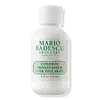What's inside
What's inside
 Key Ingredients
Key Ingredients

 Benefits
Benefits

 Concerns
Concerns

 Ingredients Side-by-side
Ingredients Side-by-side

Water
Skin ConditioningPentylene Glycol
Skin ConditioningSodium Acrylates Crosspolymer-2
AbsorbentC13-15 Alkane
SolventNeopentyl Glycol Diheptanoate
EmollientCetearyl Olivate
Phenoxyethanol
PreservativeSorbitan Olivate
EmulsifyingPolyacrylamide
Caprylyl Glycol
EmollientChondrus Crispus Extract
Skin ConditioningChlorphenesin
AntimicrobialPropylene Glycol
HumectantPolyacrylate-13
C13-14 Isoparaffin
EmollientPolyisobutene
Laureth-7
EmulsifyingPolysorbate 20
EmulsifyingSodium Hyaluronate
HumectantSorbitan Isostearate
EmulsifyingCitric Acid
BufferingCI 14700
Cosmetic ColorantCI 19140
Cosmetic ColorantSodium Chloride
MaskingSodium Sulfate
Water, Pentylene Glycol, Sodium Acrylates Crosspolymer-2, C13-15 Alkane, Neopentyl Glycol Diheptanoate, Cetearyl Olivate, Phenoxyethanol, Sorbitan Olivate, Polyacrylamide, Caprylyl Glycol, Chondrus Crispus Extract, Chlorphenesin, Propylene Glycol, Polyacrylate-13, C13-14 Isoparaffin, Polyisobutene, Laureth-7, Polysorbate 20, Sodium Hyaluronate, Sorbitan Isostearate, Citric Acid, CI 14700, CI 19140, Sodium Chloride, Sodium Sulfate
Water
Skin ConditioningDimethicone
EmollientGlycerin
HumectantDimethicone/Vinyl Dimethicone Crosspolymer
Skin ConditioningPhenoxyethanol
PreservativePolyacrylamide
Cetearyl Olivate
Sorbitan Olivate
EmulsifyingDimethiconol
EmollientC13-14 Isoparaffin
EmollientDimethicone Crosspolymer
Emulsion StabilisingChlorphenesin
AntimicrobialCarbomer
Emulsion StabilisingLaureth-7
EmulsifyingSodium Hyaluronate
HumectantEthylhexylglycerin
Skin ConditioningParfum
MaskingC12-14 Pareth-12
EmulsifyingSodium Hydroxide
BufferingBlue 1 Lake
Cosmetic ColorantWater, Dimethicone, Glycerin, Dimethicone/Vinyl Dimethicone Crosspolymer, Phenoxyethanol, Polyacrylamide, Cetearyl Olivate, Sorbitan Olivate, Dimethiconol, C13-14 Isoparaffin, Dimethicone Crosspolymer, Chlorphenesin, Carbomer, Laureth-7, Sodium Hyaluronate, Ethylhexylglycerin, Parfum, C12-14 Pareth-12, Sodium Hydroxide, Blue 1 Lake
Ingredients Explained
These ingredients are found in both products.
Ingredients higher up in an ingredient list are typically present in a larger amount.
This ingredient is also known as "C13-14 Isoalkane".
C13-14 Isoparaffin is created from petroleum-based mineral oils. It is an emollient and helps thicken a product.
As an emollient, it helps keep the skin soft and smooth by creating a barrier on top. This barrier traps moisture in, keeping the skin hydrated.
C13-14 Isoparaffin may not be fungal-acne safe.
Learn more about C13-14 IsoparaffinCetearyl Olivate is an emulsifier and texture enhancer. It is derived from the fatty acids of olive oil and Cetearyl alcohol, and is biodegradable.
As an emulsifier, it is used to prevent oils and waters from separating. It can also
Manufacturers use the name Olivem 1000. This ingredient has been found to preserve the natural microbiome of skin. Having a healthy microbiome helps keep our skin healthy and protects against harmful bacteria. This ingredient is grouped with Sorbitan Olivate under the name Olivem 1000.
Learn more about Cetearyl OlivateChlorphenesin is a synthetic preservative. It helps protect a product against bacteria in order to extend shelf life. In most cases, Chlorphenesin is paired with other preservatives such as phenoxyethanol and caprylyl glycol.
Chlorphenesin is a biocide. This means it is able to help fight the microorganisms on our skin. It is also able to fight odor-releasing bacteria.
Chlorphenesin is soluble in both water and glycerin.
Studies show Chlorphenesin is easily absorbed by our skin. You should speak with a skincare professional if you have concerns about using Chlorphenesin.
Learn more about ChlorphenesinLaureth-7 is created by the ethoxylation of lauryl alcohol using ethylene oxide. Lauryl alcohol is a fatty alcohol with hydrating properties.
This ingredient is an emulsifier and cleansing ingredient. As an emulsifier, it is used to prevent ingredients from separating. It also helps cleanse the skin by gathering dirt, oil, and pollutants to be rinsed away.
Phenoxyethanol is a preservative that has germicide, antimicrobial, and aromatic properties. Studies show that phenoxyethanol can prevent microbial growth. By itself, it has a scent that is similar to that of a rose.
It's often used in formulations along with Caprylyl Glycol to preserve the shelf life of products.
Polyacrylamide is a synthetic polymer. It is used to stabilize products and bind ingredients. When hydrated, Polyacrylamide forms a soft gel.
Polyacrylamide is low-toxicity. If source properly, it is deemed safe to use in cosmetics.
It should be noted the precursor to Polyacrylamide is acrylamide. Acrylamide is a carcinogen. Most reputable sources of Polyacrylamide will screen for residual acrylamide to make sure the count is in a safe range. Acrylamide is not able to be absorbed through the skin.
We recommend speaking with a professional if you have concerns.
Learn more about PolyacrylamideSodium Hyaluronate is hyaluronic acid's salt form. It is commonly derived from the sodium salt of hyaluronic acid.
Like hyaluronic acid, it is great at holding water and acts as a humectant. This makes it a great skin hydrating ingredient.
Sodium Hyaluronate is naturally occurring in our bodies and is mostly found in eye fluid and joints.
These are some other common types of Hyaluronic Acid:
Learn more about Sodium HyaluronateSorbitan Olivate is created from the fatty acids in olive oil and sorbitol.
This ingredient is an oil in water emulsifier. It helps stabilize a product by preventing oils and waters from separating. Sorbitan Olivate also helps hydrate the skin.
Manufacturers sell sorbitan olivate under the name OliveM 1000. OliveM 1000 a multifunctional ingredient. It is self-emulsifying. According to a manufacturer, OliveM 1000 does not disrupt natural skin biome.
Due to its olive oil base, this ingredient may not be fungal-acne safe.
Learn more about Sorbitan OlivateWater. It's the most common cosmetic ingredient of all. You'll usually see it at the top of ingredient lists, meaning that it makes up the largest part of the product.
So why is it so popular? Water most often acts as a solvent - this means that it helps dissolve other ingredients into the formulation.
You'll also recognize water as that liquid we all need to stay alive. If you see this, drink a glass of water. Stay hydrated!
Learn more about Water